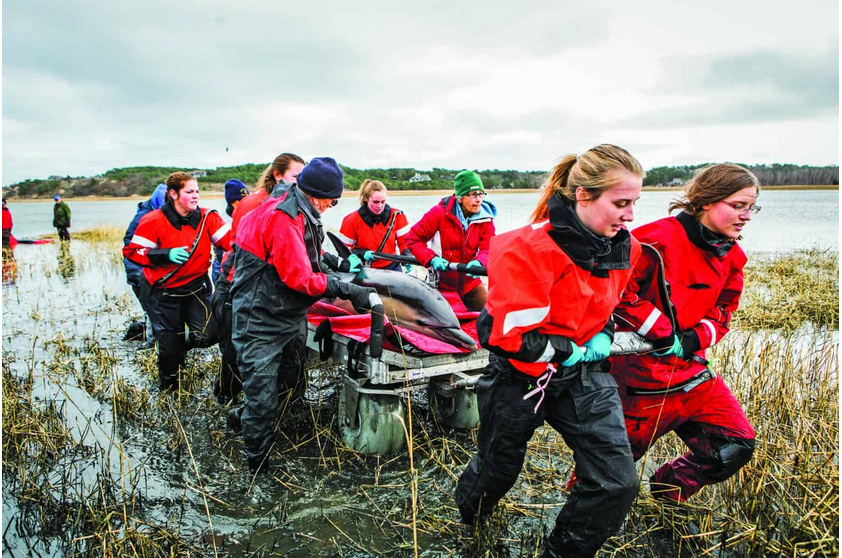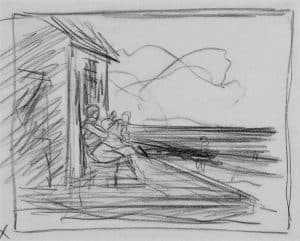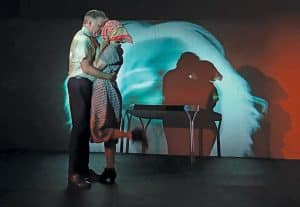IFAW MMRR responders carefully transport a stranded dolphin. Photo: © Andrea Spence All photographed activities conducted under a federal stranding agreement between IFAW and NMFS under the MMPA.
by Lee Roscoe
The new International Fund for Animal Welfare (IFAW) Dolphin Rescue Center in Orleans, a warehouse-sized one-floor facility, once an auto supply shop, is getting ready for “patients,” as soon as volunteers are trained in the strict NOAA protocols of handling stranded dolphins, which include sanitary precautions and biosecurity. According to Jonathan Picard, the Center’s program manager and rehabilitation coordinator for marine mammal rescue and research, they can draw on 140 volunteers, and anyone interested can apply through ifaw.org. Picard, who says he first became a rehabber of exotic and local animals in Maine at his local sanctuary because he couldn’t “stand to see an animal struggle,” is thrilled to be with IFAW on this new project that “gives animals a second chance at life.”
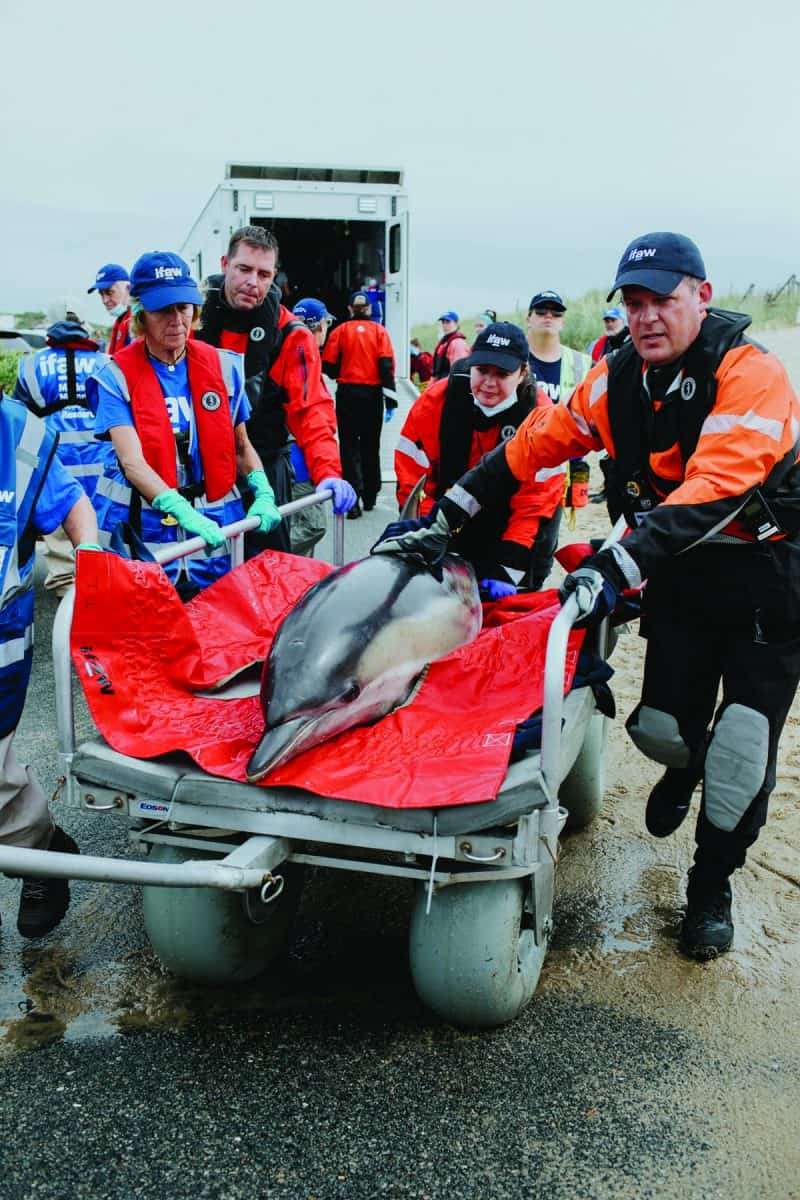
Photo: Stacey Hedman / © IFAW
The first venture of its kind, this is a three-year pilot program created to save some dozen a year of an average of 20 of what Picard calls “borderline” animals—dolphins and porpoises that are not so sick they cannot be saved and not so healthy that they can be immediately released back to the sea after they have stranded.
These borderlines will be evaluated in the medical trailer IFAW brings to strandings, and if deemed appropriate candidates, will be transported to the facility (which will be staffed 24/7) carried in a red canvas stretcher and hung on a weighing machine. With two trained cetacean specialists helping, at least six (and optimally nine) people will carry the stretchered dolphin, weighing up to 500 pounds, to a platform, then transfer it to a blue-sided pool, 8 feet in diameter, 5-1/2 feet high, filled with 5,000 gallons of manmade seawater; the water levels raised or lowered as needed; the temperature adjusted to between 50 and 70 degrees. It will be ultra-sounded. Protective nets will keep the animal safe if it tries to escape. The water can be released into another holding pool where it can be recycled or held so the first pool may be cleaned and reused for a new patient. There is a Rube-Goldberg-like set of pipes, holding tanks, and containers which cleans the water before the sea salt is added. No chemicals are used in this $40,000 filtration system.
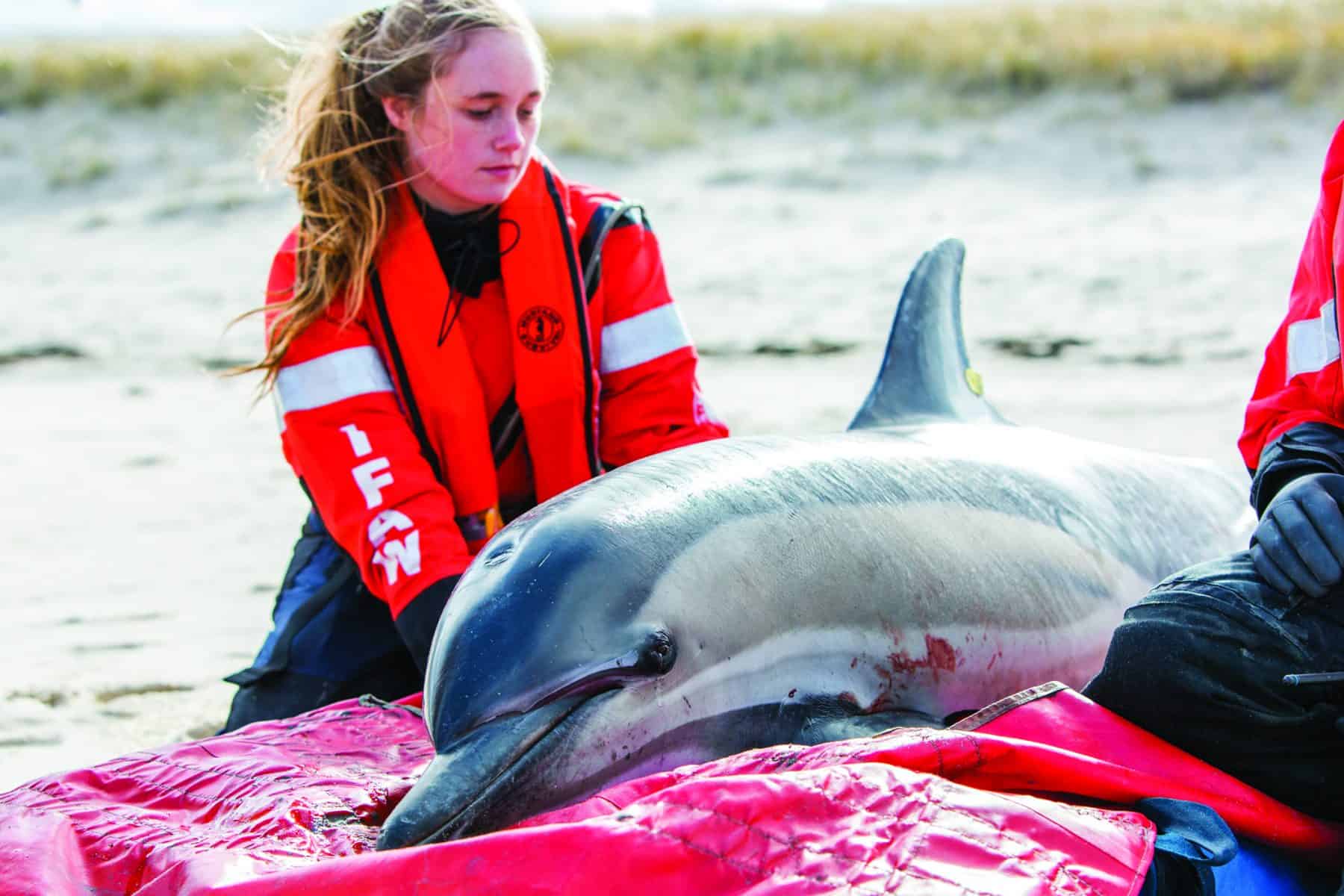
Photo: © Andrea Spence
The resting animals will be fed fresh frozen herring and fish from off the pier at Chatham, if needed, mixed into special fish gruel. They stay between 24 and 96 hours, and if recovered, they will be released to the ocean after all relevant information about them is recorded. They are photographed, especially their flukes and dorsal fins, which can help identify them, fitted with satellite tracking tags “to monitor them, to see how successful they are.” With data on “survivability” from the rescue center and the tags, scientists will be able to see if this short-term patient transitioning works, and then if it hopefully does, find new funding to continue.
Humans will go through different zones: green, yellow, and red, where they will do such things as rinse off their feet, put on yellow and black suits or wetsuits, which protect them and keep them warm in water while working with the cetaceans. These checkpoints help keep the cetaceans safe from human contamination, too.
At the front entrance is a hallway with painterly photos of dolphin rescues where a docent will educate the public on the workings of the off-limit interior and IFAW. No air from the inner sanctum will be allowed to escape into that room. There’s an office staff room in the interior space, and behind it a diagnostic lab for a final evaluation of animals’ blood, to see if they are ready for release or need euthanizing.
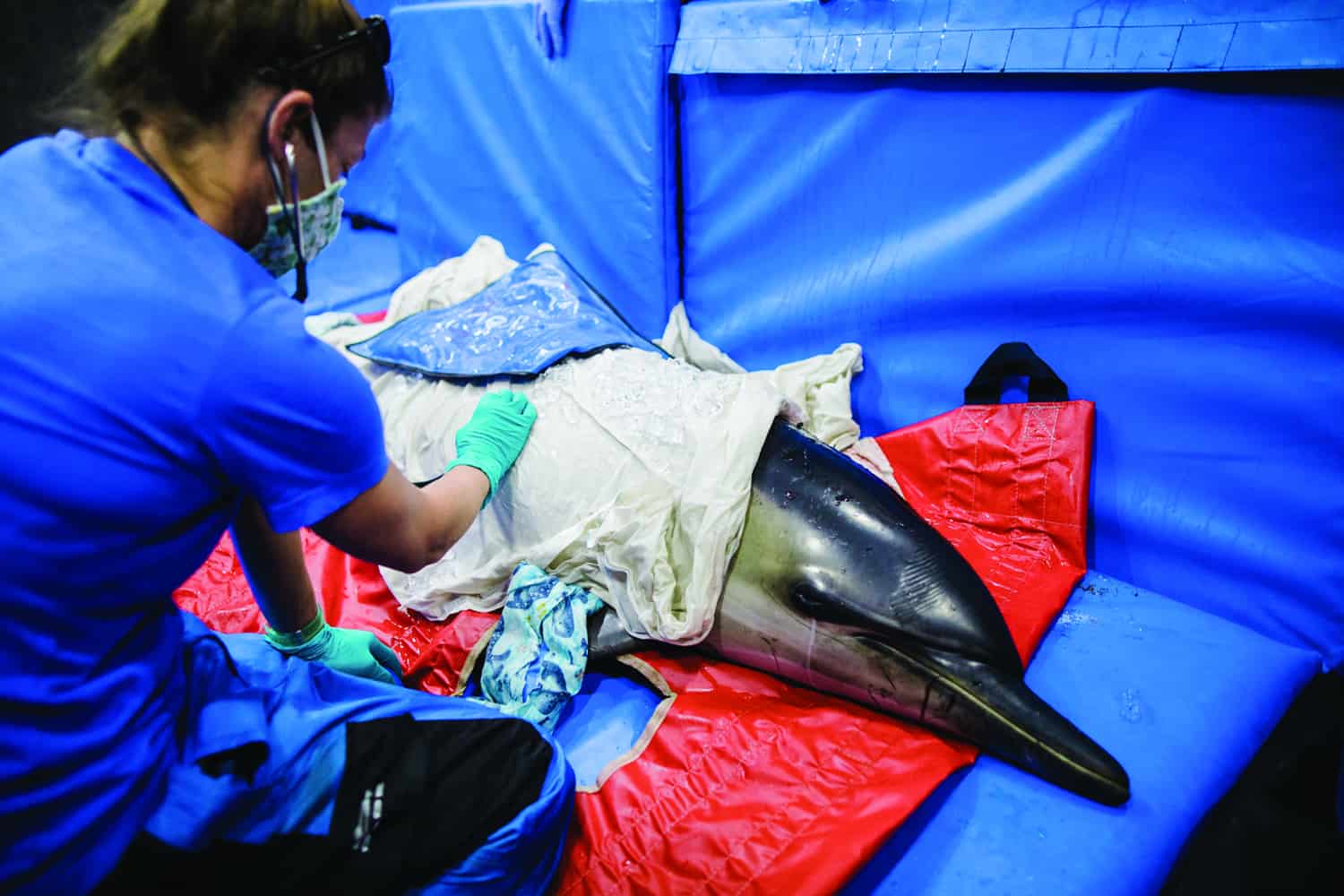
Photo: Stacey Hedman
Picard says southeastern Massachusetts, has 25 percent of all cetacean strandings: pilot whales (which IFAW, as part of the Marine Mammal Health and Stranding Response Program often rehabilitate and urge back to waters where they strand, but are too large for the new center), common dolphins, white-sided and bottlenose dolphins, and harbor porpoises.
It is the geography and tides of the Cape, particularly its bay, which lead the toothed mammals to strand. While some species are pelagic and some roam closer to shore, all hunt fish, herring, capelin, and smelt, Picard says. Following their prey, they may start out in high water, but miles of fast tides, which can fall as much as 12 or 13 feet, can leave them on flats, particularly at hotspots such as Brewster, and Wellfleet. They can breathe air, Picard says, reminding us that they are not fish, but the pressure of the earth on their bodies stresses their internal organs, and can cause breathing difficulties. Since they are sociable, if a leader heads toward shore, others may follow, also leading to stranding. Rough weather can confuse animals or push them to shoals. Picard says illness, ship strikes, and entanglements that can cause havoc (as especially the latter two do with right whales), are not so much provably causal on the Cape, commenting that illness is a factor in Florida, where he has worked. As to whether climate is affecting a preponderance or lack of standing, he says they cannot yet determine that.
The average amount of strandings per year has been 70. IFAW volunteer Hal Levin mentions anecdotally that for some reason this summer there were only a few he knows of: one on Chapin Beach, Dennis, a baby harbor porpoise, and one common dolphin on Skaket Beach in Orleans. Meanwhile, he says, people saw lots of huge pods of dolphins on whale watches. In some summers dozens to scores may beach, he adds.
Picard says winter is the worst season for strandings, mentioning that the behavior of different species also affects how many may strand and when: “social dynamics change; there are bachelor pods, nurseries, and mom and calf pairs,” pods from 5 to 16 animals and pods which can intermingle hundreds of all genders and ages. (Picard says they can live to 25-50s depending on species.) In the winter of 2012, for example, one of the worst unusual mortality events (UMEs) occurred, remaining a mystery: according to IFAW, 216 common dolphins stranded with the AP reporting as many as 124 deaths.
If you see a stranded animal alive or dead, immediately call 508-743-9548. Do not approach it. Attempting to move it could harm the animal. Stay four school buses away and keep pets leashed.
The Dolphin Rescue Center is located on Route 6A, Orleans. For more information about IFAW, visit ifaw.org.

